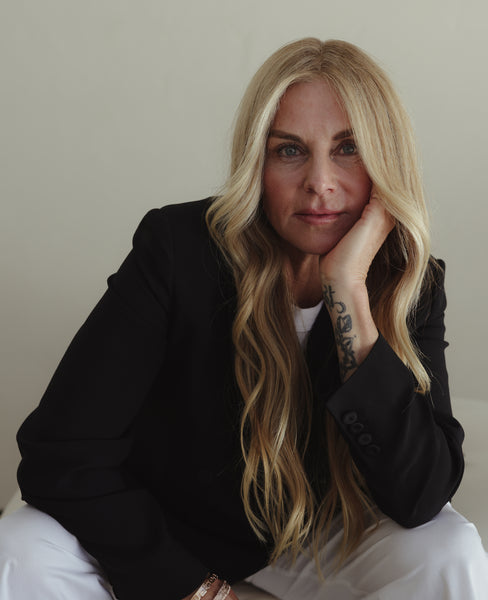17 Frightening Facts You Should Know About Skincare Products
tips- The average woman uses 12-15 products per day. A man uses around six, which means exposure to around 150+ unique and potentially harmful chemicals that all interact with each other in unknown ways.
- We may absorb up to 60% of what we put on our skin. Children’s bodies absorb 40-50% more than adults. They are at higher risk for diseases later in life when exposed to toxins.
- We are exposed to cosmetic ingredients in many different ways – by inhaling powders and sprays and via ingestion of chemicals on the hands and lips. Many cosmetics also contain enhancers that allow ingredients to further penetrate the skin. Bio monitoring studies have found that cosmetic ingredients such as parabens, triclosan, synthetic musks and sunscreens are commonly found pollutants in the bodies of women, men and children.
- Allergic reactions and sensitivities are continually increasing due to the number of chemicals found in skincare products and in our environment.>
- Using toxic products has an accumulative effect, filling your body with toxins and making it more challenging for your body to heal and repair itself.
- Some chemicals that are found in everyday skincare products are also found in brake fluid, engine degreasers and anti-freeze that are used as industrial chemicals.
- Studies have found that many chemicals in skincare products such as fragrances and sunscreens have been proven to be endocrine disruptors that can interfere with hormone regulation, increase the risk of feminisation of the male reproductive system, affect sperm count and low birth weight in girls as well as learning disabilities. They are also known to be carcinogenic and can cause skin and eye irritation.
- Just because a product is for sale in a supermarket, pharmacy or health food store it does not guarantee safety. There is no authority that requires companies to test cosmetics for safety. In Australia, unless they are approved by the Therapeutic Goods Administration (TGA) and classified as having a therapeutic effect or claim, most products and ingredients are not reviewed prior to going on the market.
- Choosing certified organic and chemical free beauty products reduces environmental impact, as the ingredients are biodegradable and do not require the use of chemicals for agricultural cultivation. Organic farming promotes healthier soil and sustainability.\
- Handcrafted products that are made in small batches have higher concentrations of bioactive ingredients and use fewer resources. You also need to use less of them.
- Mass produced products are often made in Third World countries and support cheap labour and unethical work practices and conditions.
- Every year, hundreds of thousands of animals are killed, poisoned and blinded to test the safety and efficacy of cosmetics, skincare products and household cleaning products. Buying products that are not tested on animals will help put an end to animal cruelty and sends a powerful message to multinationals that still condone these practices.
- Organic products are more expensive to produce due to the economies of scale. Ethical small companies tend to make fresh small batches on demand and spend more money implementing sustainable practices and purchasing fair trade ingredients.
- Green washing is alive and well. The words "natural" and "organic" can be used on labelling, in marketing and even in the company name without censorship and furthermore, often contain synthetic chemicals. Products that are labelled as organic can contain as little as 10% organic ingredients by weight or volume. Companies can also create their own logos to make a product appear as if it is organic. Become familiar with all labels and read the INCI (ingredient list) and look for organic certification from COSMOS, ACO. OFC and NASSA in Australia. These standards are the equivalent of USDA and are the most stringent in the world in regards to what actually goes into a product. Companies that are certified are independently audited and must comply with the ingredient criteria set by these standards.
- The cosmetic industry polices itself and is only reviewed by the Cosmetic Ingredient Review (CIR) panel. In its over 30-year history, only 11 ingredients or chemical groups have been deemed to be unsafe. Furthermore, its recommendations on restricting the use of these ingredients are not binding.
- Companies that use marketing claims pertaining a product to be "hypoallergenic” or "natural” are unregulated and do not require evidence to back up such claims, which can mean anything or nothing at all and in actuality have very little medical meaning. The only value in using these claims is for promotional purposes. To date there is no official definition for the term "natural” used in cosmetics and skin care products.
- Companies are allowed to omit some chemical ingredients such as trade secrets, nano materials and fragrance components – with high irritancy profiles from their labels. Fragrance may include any number of over 3,000 stock chemicals, none of which are required to be listed. Tests of fragrance ingredients have found an average of 14 hidden compounds per formulation.
The only way to make these facts more commonly known is for companies to be held accountable. If you're interested and ready to make the transition to cleaner beauty and personal care products you can purchase our mini kits or samples to trial.









